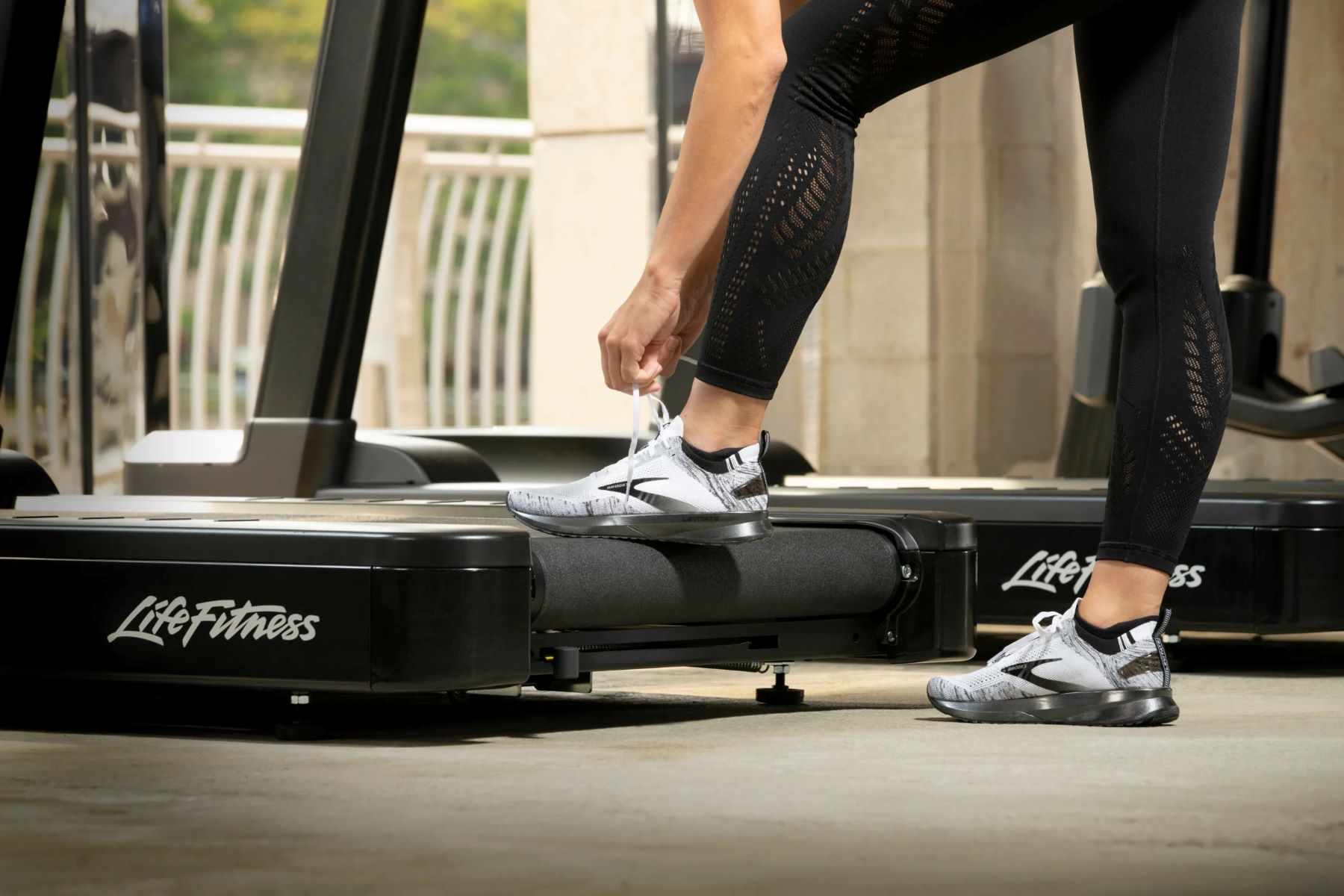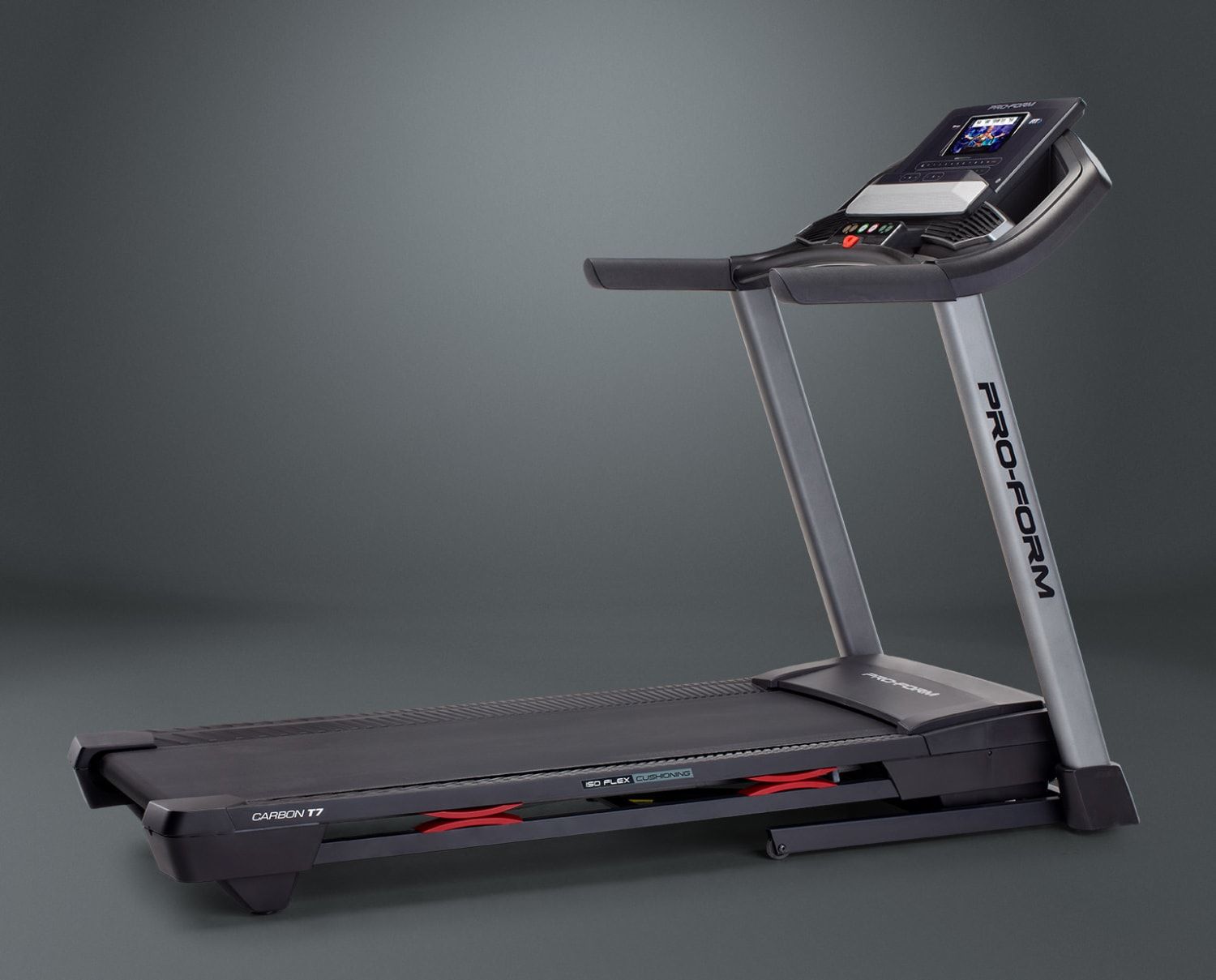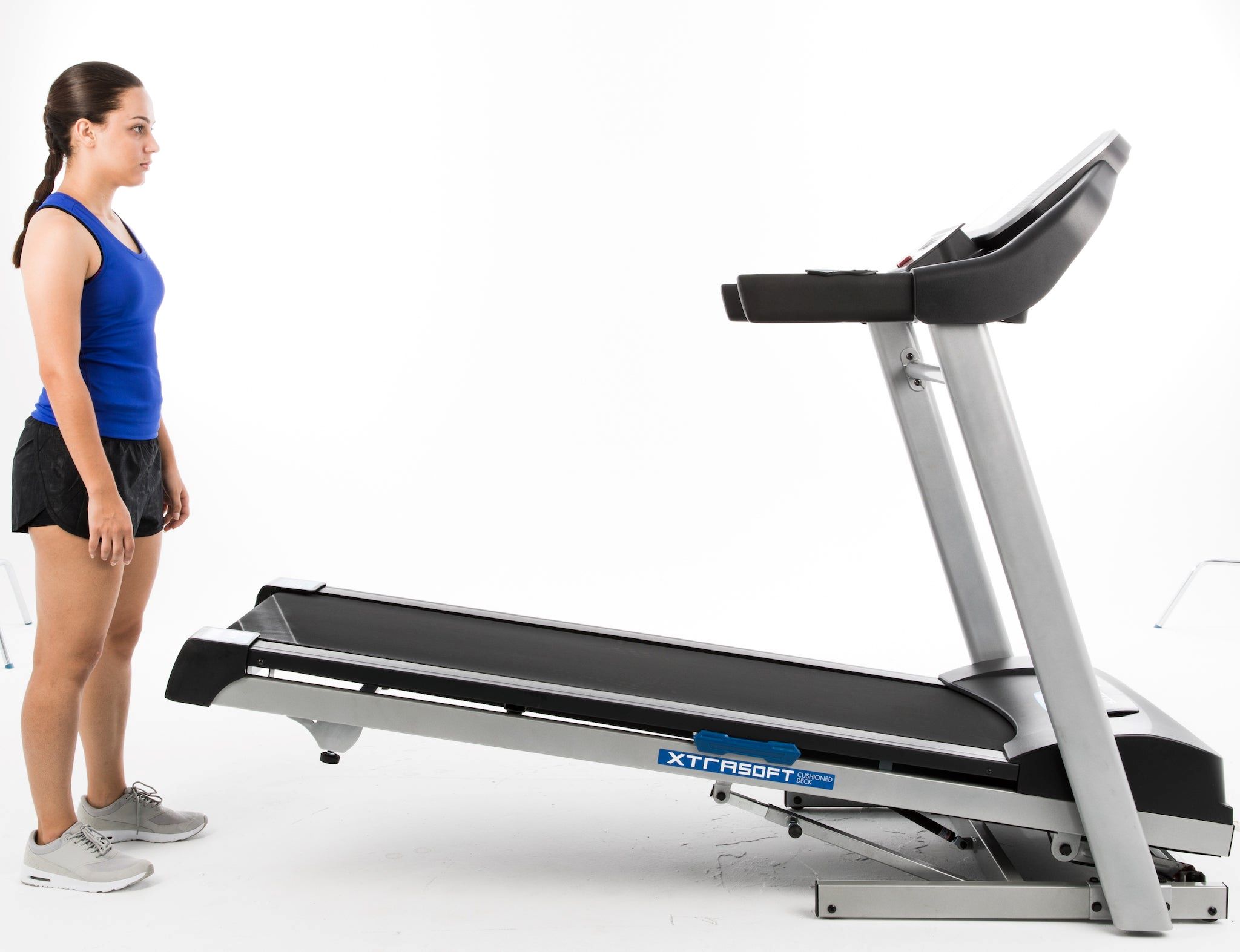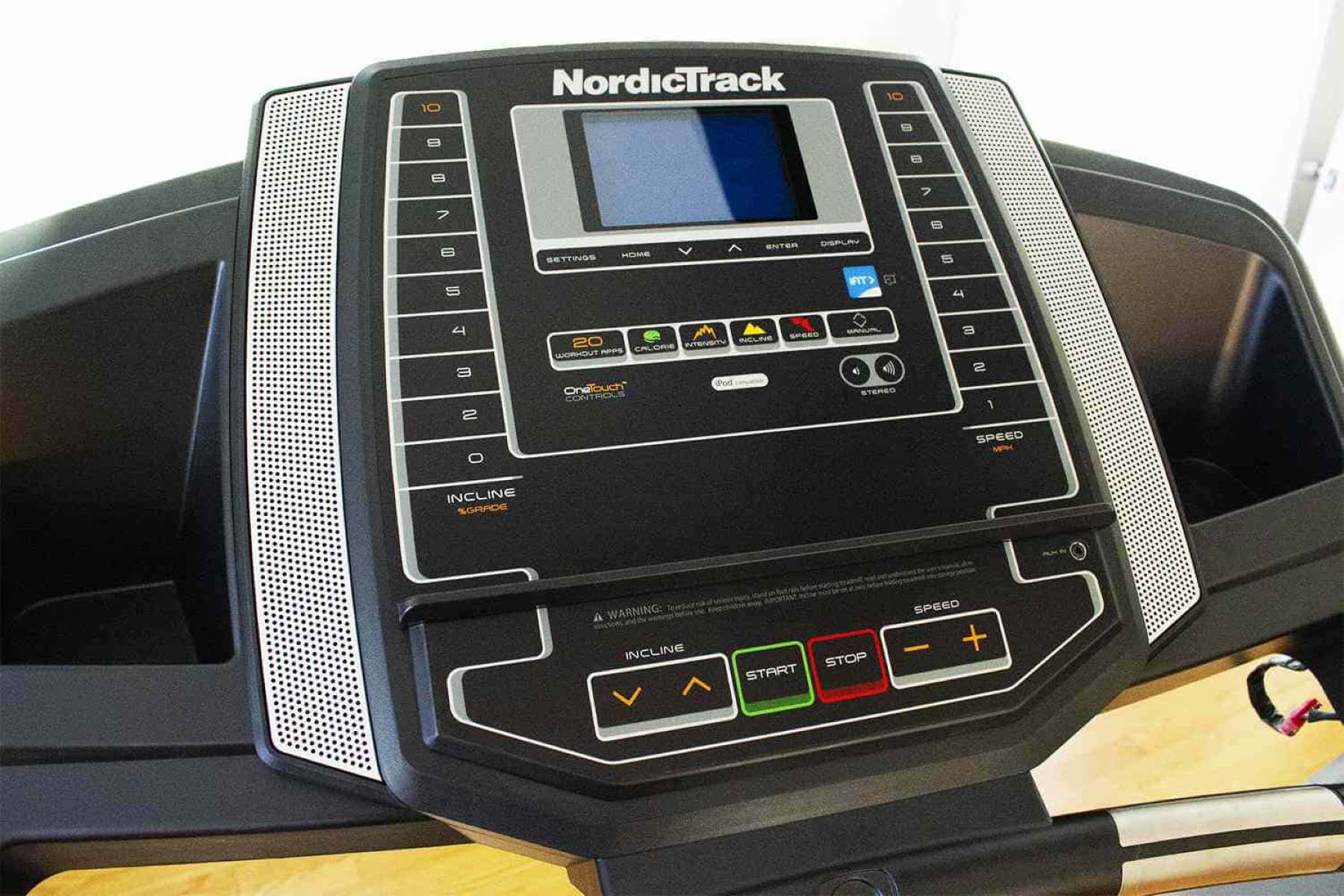

Featured
How Does A Treadmill Speed Sensor Work
Modified: August 18, 2023
Discover how the featured treadmill speed sensor works and enhances your workout experience. Explore the technology behind tracking your speed with precision.
Introduction
Treadmills have become a staple in the fitness industry, providing a convenient and effective way to get in shape or stay active. These complex machines are equipped with various sensors that monitor and measure different aspects of your workout. One crucial sensor found in treadmills is the speed sensor, which plays a vital role in calculating your speed and distance traveled.
The speed sensor in a treadmill is responsible for detecting the speed at which the belt is moving. This information is then used by the treadmill’s computer to provide accurate feedback on your workout, such as speed, distance, and calories burned. Understanding how the speed sensor works can give you insights into the accuracy and reliability of the data displayed on your treadmill’s console.
In this article, we will explore the different types of treadmill speed sensors, including optical and magnetic speed sensors. We will delve into their working mechanisms, advantages, and disadvantages. By the end, you will have a deeper understanding of how these sensors contribute to the overall performance of a treadmill and the accuracy of your workout data.
What is a Treadmill Speed Sensor?
A treadmill speed sensor is a device that measures the speed at which the treadmill belt is moving. This sensor is typically located near the front or rear roller of the treadmill and is responsible for sending signals to the treadmill’s computer, providing accurate speed and distance measurements.
The speed sensor in a treadmill works by detecting the rotation of the treadmill’s belt or roller. As the belt moves, the speed sensor uses various mechanisms to calculate the frequency or speed of the belt’s rotation. This information is then converted into data that is displayed on the treadmill’s console, allowing users to track their performance and adjust their workout accordingly.
The accuracy of the speed sensor is crucial for providing users with reliable feedback on their workout. A properly functioning speed sensor ensures that the treadmill accurately measures the speed and distance covered, allowing users to set goals and track their progress effectively. However, if the speed sensor is not functioning correctly, it can lead to inaccurate readings and an unsatisfactory user experience.
Most modern treadmills are equipped with advanced speed sensors that utilize cutting-edge technology to provide precise measurements. These sensors are designed to be highly sensitive and responsive, ensuring that the treadmill’s computer can capture even the slightest changes in speed. This technology allows users to have a real-time understanding of their performance and adjust their workout intensity accordingly.
In addition to measuring speed, some treadmills may also include a cadence sensor, which measures the number of steps or strides taken per minute. This sensor provides users with additional data, allowing them to track their running or walking efficiency and make improvements in their form and technique.
Overall, the speed sensor in a treadmill is a critical component that ensures the accuracy and reliability of the speed and distance measurements. It allows users to have a comprehensive understanding of their workout and helps them stay motivated and on track towards achieving their fitness goals.
Types of Treadmill Speed Sensors
Treadmill speed sensors come in different types, each with its own working mechanism and advantages. The two most common types of treadmill speed sensors are optical speed sensors and magnetic speed sensors. Let’s take a closer look at each of these types.
1. Optical Speed Sensor: An optical speed sensor, also known as an optical encoder, utilizes a light source and a photosensor to detect the rotation of the treadmill’s belt or roller. As the belt moves, the sensor emits light, and the photosensor detects the changes in light intensity caused by interruptions or reflections. These interruptions or reflections occur due to markings or slots on the roller or pulley. By measuring the frequency of these interruptions or reflections, the speed sensor calculates the speed at which the belt is moving. Optical speed sensors are known for their accuracy and reliability in providing precise speed and distance measurements.
2. Magnetic Speed Sensor: A magnetic speed sensor, also referred to as a magnetic reed switch or hall-effect sensor, works based on the principle of magnetism. It consists of a magnet and a magnetic sensor. The magnet is attached to the treadmill’s roller or pulley, while the magnetic sensor is positioned nearby. As the magnet rotates with the movement of the belt, it triggers the magnetic sensor, generating a signal that indicates the speed of the belt. Magnetic speed sensors are known for their durability and resistance to dust and debris. They are often used in treadmills that are exposed to harsh or outdoor environments.
These two types of speed sensors have their own set of advantages and disadvantages. Optical speed sensors are highly accurate and provide precise measurements, making them ideal for individuals who require accurate feedback for training or performance purposes. However, they may be more sensitive to environmental factors such as dust and debris, which can affect their performance. On the other hand, magnetic speed sensors are known for their durability and resistance to external elements, making them suitable for treadmills used in rugged environments. However, they may not be as accurate as optical sensors and may require periodic calibration.
It’s important to consider the type of speed sensor used in a treadmill when evaluating its accuracy and reliability. Both optical and magnetic speed sensors are commonly found in modern treadmills and provide users with accurate speed and distance measurements. Understanding the different types of speed sensors can help you make an informed decision when purchasing or using a treadmill.
Optical Speed Sensor
The optical speed sensor, also known as an optical encoder, is a type of speed sensor commonly used in treadmills to measure the speed and distance traveled by the belt. It utilizes a light source and a photosensor to detect the rotation of the treadmill’s belt or roller, providing accurate and reliable speed measurements.
The working mechanism of an optical speed sensor is relatively simple yet effective. The sensor consists of an infrared LED light source and a photosensor, which is typically a phototransistor or a photodiode. The LED emits a beam of infrared light, while the photosensor receives the light that passes through or reflects off markings or slots on the treadmill’s roller or pulley.
As the belt moves, the markings or slots on the roller interrupt the infrared light beam or cause it to reflect, resulting in changes in the intensity of the light that reaches the photosensor. The photosensor detects these changes and converts them into electrical signals. These signals are then processed by the treadmill’s computer, which calculates the speed based on the frequency of interruptions or reflections.
One of the key advantages of optical speed sensors is their high accuracy in measuring speed and distance. The interruptions or reflections caused by the markings or slots on the roller are precise and consistent, allowing for precise calculations. This accuracy is important for users looking to track their performance or train at specific speeds.
However, optical speed sensors may be more sensitive to environmental factors and require proper maintenance to ensure optimal performance. Dust or debris on the roller or near the sensor can interfere with the accuracy of the readings. It is important to regularly clean the sensor and ensure that the roller is free from any obstructions. Additionally, some optical speed sensors may require periodic calibration to maintain their accuracy over time.
Despite these considerations, optical speed sensors are widely used in treadmills due to their accuracy and reliability. They provide users with real-time feedback on their speed and distance traveled, allowing for effective monitoring and tracking of workout progress. Whether you’re using a treadmill for recreational purposes or training for a specific event, an optical speed sensor can help you stay on track and achieve your goals.
Magnetic Speed Sensor
The magnetic speed sensor, also known as a magnetic reed switch or hall-effect sensor, is another commonly used type of speed sensor in treadmills. This sensor works based on the principles of magnetism to detect the rotation of the treadmill’s belt or roller and provide accurate speed measurements.
The magnetic speed sensor consists of two main components: a magnet and a magnetic sensor. The magnet is typically attached to the roller or pulley of the treadmill, while the magnetic sensor is positioned in close proximity. As the belt moves and the roller rotates, the magnet also moves, triggering the magnetic sensor to generate a signal.
There are two main types of magnetic speed sensors: magnetic reed switches and hall-effect sensors. Magnetic reed switches are composed of two metal reeds enclosed in a glass tube filled with inert gas. When the magnet approaches the reed switch, it causes the reeds to come into contact, completing an electrical circuit and generating a signal. Hall-effect sensors, on the other hand, utilize the Hall effect to detect changes in the magnetic field caused by the moving magnet. This change in the magnetic field creates a proportional change in the output voltage of the sensor.
One of the advantages of magnetic speed sensors is their durability and resistance to external elements. They are less sensitive to dust, debris, and environmental factors compared to optical speed sensors. This makes them ideal for treadmills used in rugged or outdoor environments where exposure to elements is more likely.
However, magnetic speed sensors may not provide the same level of accuracy as optical speed sensors. The frequency of the signal generated by the sensor may not directly correlate to the speed of the belt due to variations in the magnet’s position or other factors. Calibration may be required to ensure accurate readings and maintain consistency over time.
Despite these considerations, magnetic speed sensors are widely used in treadmills for their durability and reliability. They provide users with a practical and cost-effective solution for measuring speed and distance. Whether you’re walking, jogging, or running on a treadmill, a magnetic speed sensor can deliver accurate feedback on your performance, helping you stay motivated and achieve your fitness goals.
How Does an Optical Speed Sensor Work?
An optical speed sensor, also known as an optical encoder, is a device that uses light and a photosensor to measure the speed of a treadmill’s belt or roller. It operates on the principle of interrupting or reflecting a light beam to detect the rotation of the treadmill’s components and provide accurate speed measurements.
The optical speed sensor consists of two main components: an infrared light source, typically an LED, and a photosensor, which can be a phototransistor or a photodiode. The LED emits a beam of infrared light, while the photosensor detects changes in the intensity of the light caused by interruptions or reflections.
When the treadmill is in operation, the belt or roller has markings or slots on its surface. As the belt moves, these markings or slots interrupt the infrared light beam or cause it to reflect. This interruption or reflection creates changes in the light intensity that reaches the photosensor.
The photosensor, positioned to receive the light that passes through or reflects off the treadmill’s markings or slots, converts the changes in light intensity into electrical signals. These signals are then processed by the treadmill’s computer, which calculates the speed based on the frequency of interruptions or reflections detected by the photosensor.
The accuracy of an optical speed sensor lies in its ability to detect and measure even the smallest changes in light intensity caused by the interruptions or reflections. By accurately counting the frequency of these changes, the speed sensor can provide precise measurements of the treadmill’s speed and distance traveled.
It is worth noting that optical speed sensors may be more sensitive to external factors, such as dust or debris that may accumulate on the treadmill’s components. This can potentially affect the accuracy of the speed readings. Regular maintenance, including cleaning the sensor and ensuring the roller is free from obstructions, is important to ensure optimal performance.
Overall, the optical speed sensor is a critical component in determining the speed of a treadmill. Its precise and reliable measurements allow users to monitor and track their workout performance with accuracy. Whether you’re walking, jogging, or running on a treadmill, the optical speed sensor provides you with real-time feedback, helping you make adjustments to achieve your fitness goals effectively.
How Does a Magnetic Speed Sensor Work?
A magnetic speed sensor, also referred to as a magnetic reed switch or hall-effect sensor, is a device that uses magnetism to detect the rotation of a treadmill’s belt or roller and provide accurate speed measurements. It operates based on the principles of magnetism and the interaction between a magnet and a magnetic sensor.
The magnetic speed sensor consists of two main components: a magnet and a magnetic sensor. The magnet is usually attached to the treadmill’s roller or pulley, while the magnetic sensor is positioned in close proximity to the magnet.
As the treadmill is in motion, the magnet, fixed to the rotating part of the treadmill, also moves. This movement causes a magnetic field to be created around the magnet. The magnetic sensor, designed to detect changes in the magnetic field, senses the interaction between the magnet and itself.
There are two common types of magnetic speed sensors: magnetic reed switches and hall-effect sensors. Magnetic reed switches consist of two metal reeds enclosed within a glass tube filled with inert gas. The movement of the magnet causes the reeds to come into contact, completing an electrical circuit and generating a signal.
Hall-effect sensors utilize the Hall effect, which states that when a magnetic field interacts with a conductor, it creates a voltage difference across the conductor. These sensors, composed of a semiconductor material, detect changes in the magnetic field caused by the moving magnet. This change in the magnetic field results in a proportional change in the output voltage of the sensor, indicating the speed of the treadmill’s belt.
One of the key advantages of magnetic speed sensors is their durability and resistance to dust, debris, and other environmental factors. Unlike optical speed sensors, which may be more sensitive to these elements, magnetic speed sensors are better equipped to handle harsh or outdoor environments.
However, it’s important to note that magnetic speed sensors may not provide the same level of accuracy as optical speed sensors. Variations in the magnet’s position or other factors can affect the frequency of the signal generated by the sensor, leading to potential discrepancies in speed measurements. Calibration may be required to ensure accurate readings and maintain consistency over time.
Despite these considerations, magnetic speed sensors are widely used in treadmills due to their durability and reliability. They provide users with a practical and cost-effective solution for measuring speed and distance accurately. Whether you’re walking, jogging, or running on a treadmill, a magnetic speed sensor enables you to track your performance and make the necessary adjustments to reach your fitness goals.
Advantages and Disadvantages of Optical Speed Sensors
Optical speed sensors, also known as optical encoders, offer several advantages and disadvantages in measuring the speed of a treadmill’s belt or roller. Understanding these pros and cons can help you evaluate whether an optical speed sensor is the right choice for your needs.
Advantages:
- High Accuracy: Optical speed sensors are known for their high accuracy in measuring speed and distance. The precise interruptions or reflections caused by the markings or slots on the treadmill’s roller or pulley allow for accurate calculations.
- Real-Time Feedback: Optical speed sensors provide real-time feedback on your speed and distance traveled during your workout. This feedback allows you to track your performance and make adjustments accordingly.
- Wide Range of Applications: Optical speed sensors are versatile and can be used in various types of treadmills, including those used for recreational purposes or those used for professional training and performance monitoring.
Disadvantages:
- Sensitivity to Environmental Factors: Optical speed sensors may be more sensitive to environmental factors such as dust, debris, and other particles. It is essential to regularly clean the sensor and ensure the roller is free from any obstructions to maintain accurate readings.
- Calibration Requirements: Some optical speed sensors may require periodic calibration to maintain their accuracy over time. Calibration ensures that the sensor continues to provide precise measurements and consistent results.
- Higher Cost: Compared to other types of speed sensors, optical speed sensors can be more expensive. This may be a consideration for individuals or businesses looking for a cost-effective solution.
Overall, optical speed sensors offer high accuracy and real-time feedback, making them ideal for individuals looking for precise speed and distance measurements. However, their sensitivity to environmental factors and potential calibration requirements should be taken into account. If accuracy is a top priority and regular maintenance is feasible, an optical speed sensor can be an excellent choice for your treadmill.
Advantages and Disadvantages of Magnetic Speed Sensors
Magnetic speed sensors, also known as magnetic reed switches or hall-effect sensors, offer several advantages and disadvantages in measuring the speed of a treadmill’s belt or roller. Understanding these pros and cons can help you evaluate whether a magnetic speed sensor is the right choice for your needs.
Advantages:
- Durability: Magnetic speed sensors are known for their durability and resistance to external elements, such as dust and debris. Their robust construction allows them to withstand harsh or outdoor environments.
- Reliability: Magnetic speed sensors are reliable in providing speed measurements, as they are less prone to fluctuations caused by environmental factors. They offer consistent results over time.
- Cost-Effective: Magnetic speed sensors are often more cost-effective compared to other types of speed sensors, making them an attractive option for those on a budget.
Disadvantages:
- Lower Accuracy: Magnetic speed sensors may not provide the same level of accuracy as optical speed sensors. Variations in the magnet’s position or other factors can affect the frequency of the signal generated, leading to potential discrepancies in speed measurements.
- Calibration Requirements: Some magnetic speed sensors may require periodic calibration to maintain accurate readings. Regular calibration ensures precise measurements and consistent results.
- Limited Applications: Magnetic speed sensors may be limited in their range of applications compared to optical speed sensors. They are commonly used in treadmills for recreational or lower-intensity workouts.
Overall, magnetic speed sensors offer durability, reliability, and cost-effectiveness, making them a suitable choice for certain treadmill applications. While they may not provide the same level of accuracy as optical speed sensors, their robust construction and resistance to external elements make them an attractive option. If reliability and cost-effectiveness are important factors for your treadmill, a magnetic speed sensor can be a suitable choice. However, it’s crucial to consider the specific requirements of your treadmill and the level of accuracy needed for your workouts.
Conclusion
Treadmill speed sensors play a crucial role in providing accurate and reliable speed measurements for treadmill users. Optical and magnetic speed sensors are the two most common types used in treadmills, each with its own set of advantages and disadvantages.
Optical speed sensors, or optical encoders, offer high accuracy and real-time feedback on speed and distance traveled. They utilize the interruption or reflection of a light beam to detect the rotation of the treadmill’s belt or roller. While they require regular maintenance to ensure optimum performance, optical speed sensors are widely used for their precise measurements and versatility in various treadmill applications.
On the other hand, magnetic speed sensors, such as magnetic reed switches or hall-effect sensors, provide durability and resistance to dust, debris, and other environmental factors. They offer reliable speed measurements and are cost-effective compared to optical speed sensors. However, magnetic speed sensors may have slightly lower accuracy and may require periodic calibration for consistent results.
When choosing a treadmill, it’s important to consider the type of speed sensor used and its suitability for your specific needs. If accuracy and real-time feedback are critical, an optical speed sensor may be the ideal choice. If durability and cost-effectiveness are prioritized, a magnetic speed sensor may be an excellent option.
Regardless of the type of speed sensor used, both optical and magnetic speed sensors contribute to the overall performance of a treadmill. They enable users to track their speed and distance traveled, monitor their progress, and make adjustments to their workouts. With accurate speed measurements at their disposal, treadmill users can set goals, track their performance, and achieve their fitness objectives effectively.
In conclusion, whether it’s an optical speed sensor or a magnetic speed sensor, the speed measuring technology in treadmills enhances our ability to track and improve our workouts. It’s a testament to the continuous advancements in technology that make fitness more accessible and engaging for individuals of all fitness levels.









